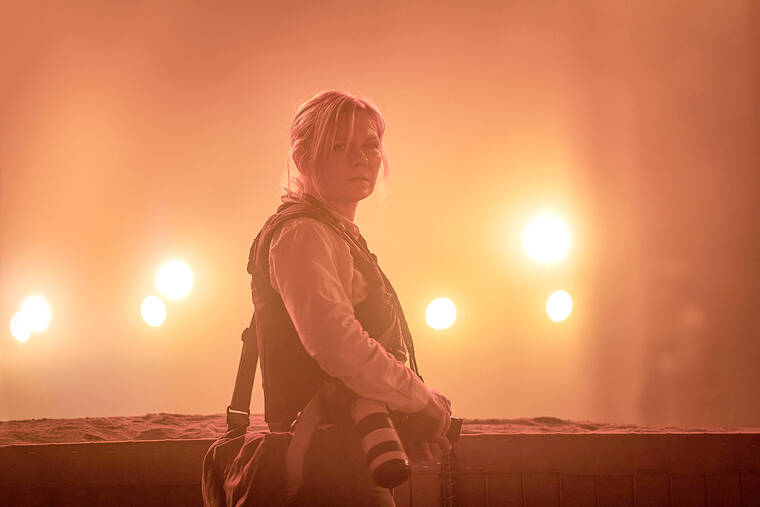If you’re searching for insight into the likelihood of a second American civil war, you won’t find it in “Civil War,” a film written and directed by Alex Garland and currently in theaters.
When the movie starts, the U.S. is already in full-blown war against itself. Things have gotten so bad that California and Texas have formed a coalition — strange bedfellows, indeed! — to resist an apparently authoritarian president who has somehow forced his way into an unconstitutional third term.
Garland doesn’t explain how things got to this sorry pass, but for the purposes of the movie, it’s largely immaterial. The civil war in “Civil War” is mostly background for a road trip movie in which stock characters make their way from New York to Washington amid chaos, troop movements, executions, torture and mass burials.
In fact, in some respects the possibility of a real civil war is trivialized by its cinematic portrayal, which is more concerned with human relationships and journalism than with the conditions that lead to violence in a hypothetical United States of America.
A moviegoer could plausibly leave the theater without being particularly moved to wonder: “Could it happen here?”
For that momentous question, consider Barbara F. Walter’s “How Civil Wars Start and How to Stop Them,” published in 2022. Walter is a political scientist who has studied civil wars for three decades.
Walter reports on her work on the Political Instability Task Force, an effort initiated by the CIA to identify factors that indicate a nation’s vulnerability to civic unrest. The task force came up with 38 elements that expose a nation to risk, such as income inequality, discrimination, extreme factionalism and diminished confidence in elections.
One of the most predictive factors is “anocracy.” Strong democracies do not have civil wars; neither do full autocracies. But nations that embody elements of both democracy and autocracy — anocracies — are particularly vulnerable. According to Walter, in January 2021 the U.S. slipped into the dangerous middle ground of anocracy.
Of course, a modern American civil war would not resemble the blue versus gray of 1861-1865. Modern civil wars are fought differently. Even the organized troop movements depicted in Garland’s “Civil War” would be unlikely. But the essential ingredients for a consequential level of society-disrupting violence are all present in the U.S.: committed factionalism based on demographic changes; fringe groups’ capacity to organize on social media; and, above all, an overabundance of powerful firearms and enough Americans willing to use them, a volatile mixture that doesn’t require much of a spark to explode.
Some have suggested that modern America doesn’t have issues sufficiently contentious to provide such a spark. I’m not so sure.
In the early days of our country, the issue was taxes. In 1786, Massachusetts farmers took up arms against the pre-constitution U.S over taxes in the short-lived Shays’ Rebellion. The Whiskey Rebellion of 1791 — taxes again, on whiskey this time — required the intervention of George Washington.
In 1861, the issue was slavery, which embodied a disagreement so powerful and intractable that it led to the Civil War and the deaths of 620,000 soldiers.
Is modern America so divided by irresolvable conflicts that the only solution is violence? For example, are our pro-choice and anti-abortion factions any less committed to the outcome of that conflict than the abolitionists and the southern plantation owners of the antebellum South?
And what about the outcome of an election? By definition, in a democracy once the method we use for resolving conflicts — elections — has failed, what options remain?
In short, it’s naive to imagine that modern America doesn’t face issues for which citizens would be willing to take up arms.
Countries nearly always sleepwalk into civil war. Walter’s essential message is a warning against complacency. Walter says that she has interviewed many people who have lived through civil wars. They all say the same thing: “I didn’t see it coming.”
John M. Crisp lives in Texas and can be reached at jcrispcolumns@gmail.com.

